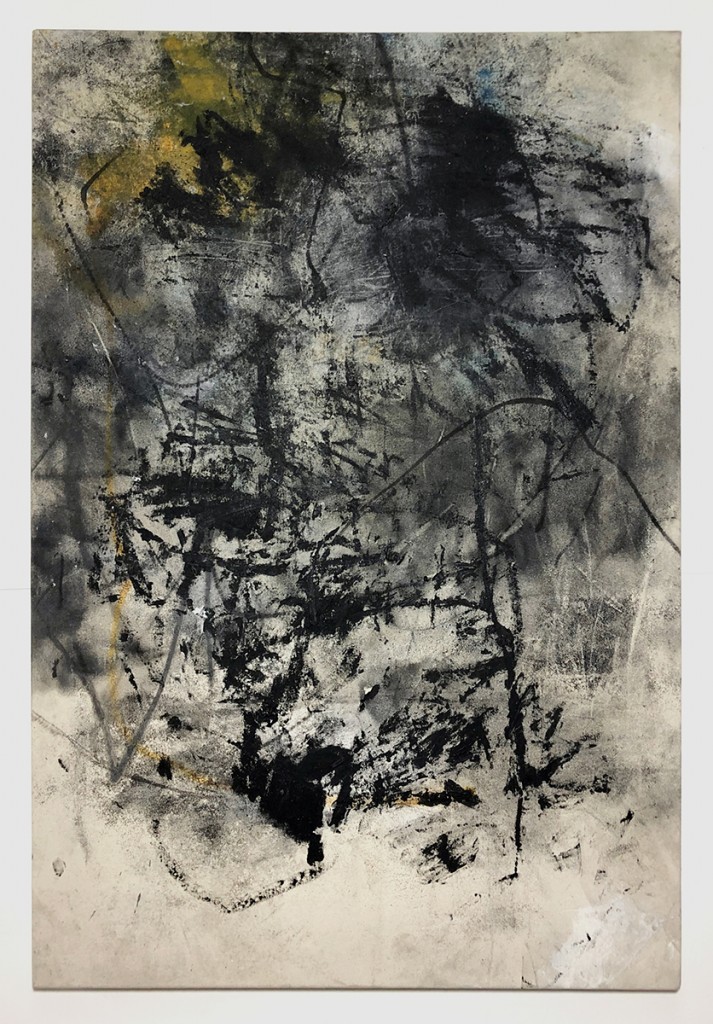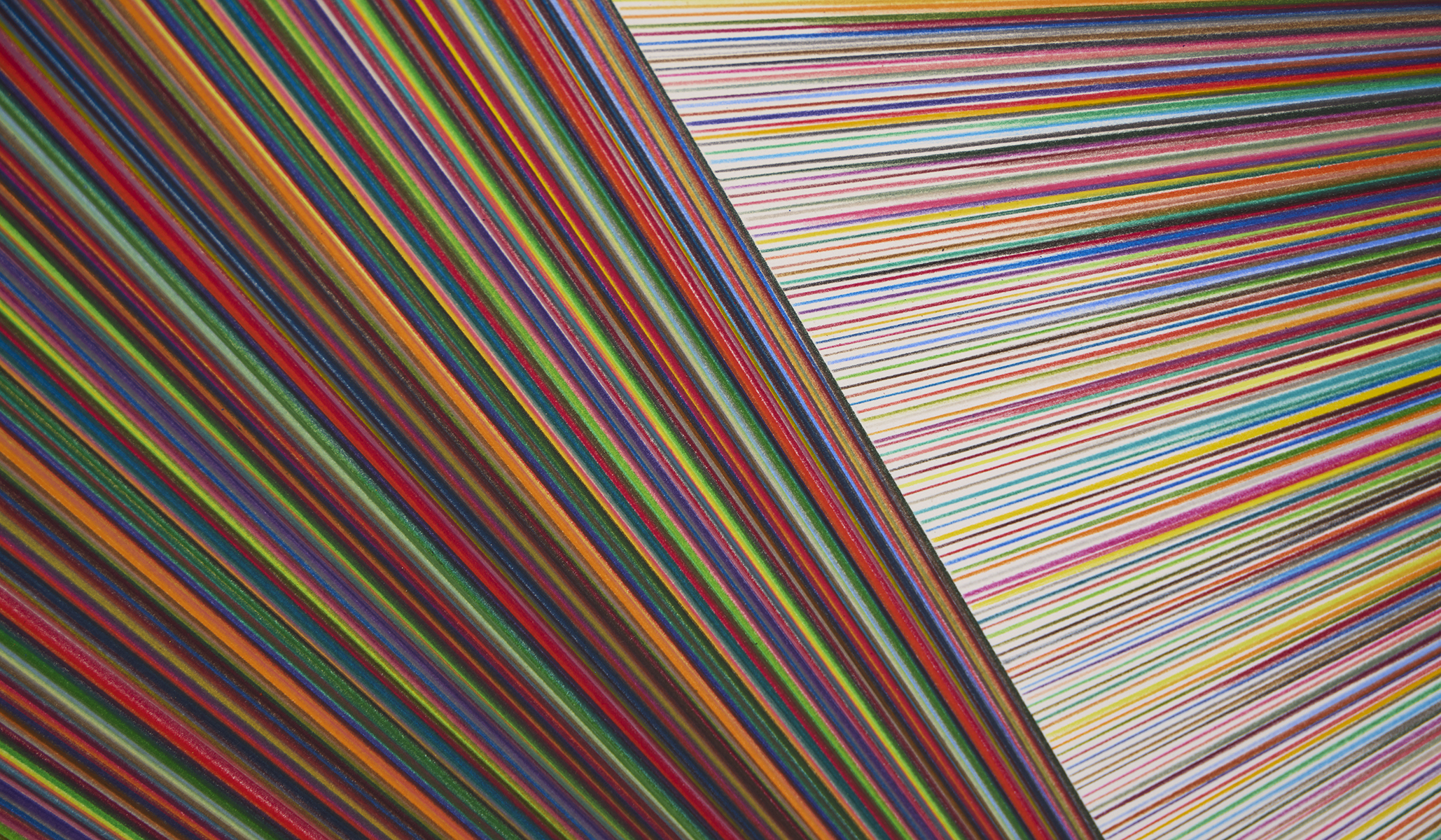“I experiment with speed and seek imperfection, intending to defy composition and structure. Chaos. They’re either paired back or over painted, cut apart and re-sewn and re-painted. I use a hell of a lot of paint to not have much paint left on the canvas. I kick dirt all over it, rub it in, add rust, scrunch up the canvas and do whatever’s necessary to create marks that I would never be able to make consciously.”
Ryan McGennisken
This July, Artereal Gallery is offering an experience of the intriguing paintings of fast-emerging Melbourne-based artist Ryan McGennisken, who has quickly become known for his grungy aesthetic created by transforming industrial materials such as grease, oil, rust and grime, into elegant and minimal paintings – and for his alchemical ability to shift the ugliness of the world into the strangely beautiful.
“Without consciously pursuing any major themes, the works for They keep saying not bad for a Monday touch on reoccurring ideas around existence, fragility, perfection, imperfection, identity, and surface. I am always influenced by the decaying world, abandoned buildings or cars, mental institutions, schizophrenia, dirty and out of tune grimy music, prisons and their guests, back alley ways, bleak and vast industrial waste lands, broken guitar strings, broken coffee mugs, broken anything, smashed windows, bad graffiti, skate and BMX culture, seedy whiskey bars, bush fires, car breakdowns, car crashes, bad horror movies, night time, storms, full ashtrays, overflowing garbage cans. The list continues in this vein. My practice is purely experimental. There’s no planning, measurements or prior marks or sketches –my work is built autonomously, by adding and deleting layers with little to no thought about what stays, gets painted over, or completely deleted.


I experiment with speed and seek imperfection, intending to defy composition and structure. Chaos. They’re either paired back or over painted, cut apart and re-sewn and re-painted. I use a hell of a lot of paint to not have much paint left on the canvas. I kick dirt all over it, rub it in, add rust, scrunch up the canvas and do whatever’s necessary to create marks that I would never be able to make consciously. The results often resemble fragments of walls or grounds of bleak industrial wastelands, that reflects where I work full-time, in my day job, as a material handler at a large international manufacturing company.”
Ryan McGennisken
Artist Statement, 2019.
In late 2017, artist Ryan McGennisken applied for a job as a ‘material handler’, the beginning of an undocumented research project. Later that month, he walked in to his first day on the job in a bleak industrial factory, where he was to supply factory line operators with parts to assemble prime movers. His world outside of the studio, for forty hours per week, became surrounded by factory workers, hi-vis clothing, metal, plastics, packaging, garbage, heavy plant equipment and vast amounts of concrete.
Ryan’s objective was to experience the environments of a large manufacturing company to explore and work in and around warehouses and factory buildings. To view structures, cranes, the noises, doors, the walls, grounds and processes; to experience the life of a factory worker.
Through this, Ryan’s fascination with the built up industrial landscape has grown exponentially, giving special interest to bleak walls, peeling paint, vast amounts of concrete and the build up of components and grit. All of which is the driving inspiration for the paintings shown in; ‘THEY KEEP SAYING NOT BAD FOR A MONDAY’. The title derives from a response by the majority of other factory workers when asked the question on a Monday morning; “How are you?”
Contrasting the factory’s organization of assembling prime movers – there is very little planning in the production of Ryan’s paintings. No measurements, prior marks or sketches – the work is painted and built in an autonomous manner on the floor, adding and deleting layers of paint and materials with little to no thought about what marks stay, get painted over or, completely deleted. Ryan allows the studio’s chaos drive the experimentation of imperfection and speed, of which the works are produced.
Other non-art materials from the industrial world, like rust and dirt, are also at times employed. The canvas is scrunched, ripped, cut and painted, sewn together, then often repeated; to do whatever’s necessary to create marks that wouldn’t be able to be made consciously. The results often resemble fragments of walls and rapid roller doors found in and around the factory where Ryan works.
Transforming. Melding. Revealing.
From the spontaneous
to the enduring,
experience the paintings
of Ryan McGennisken.



